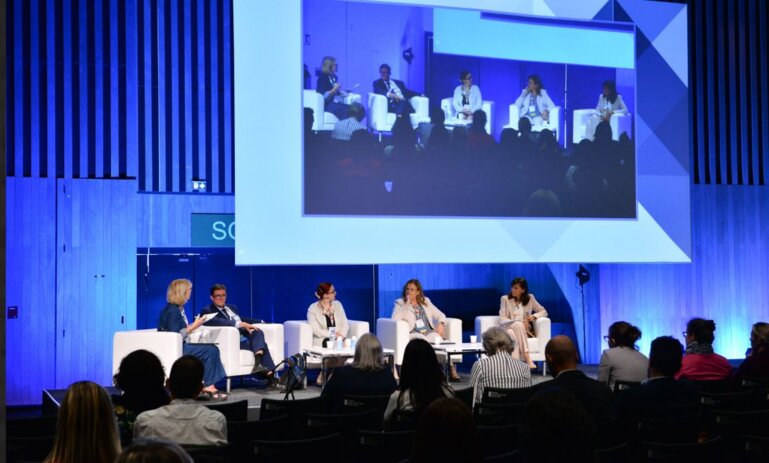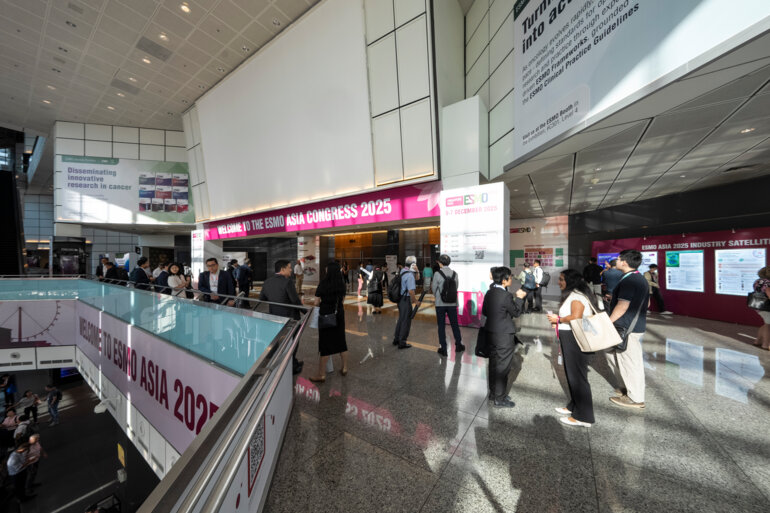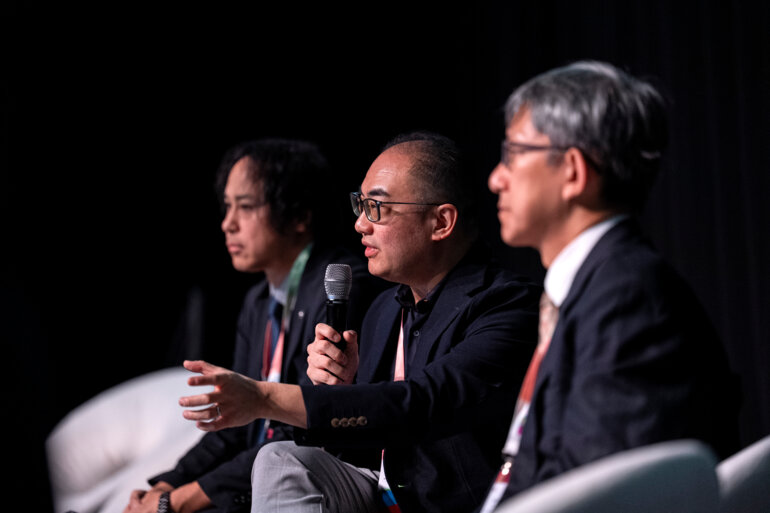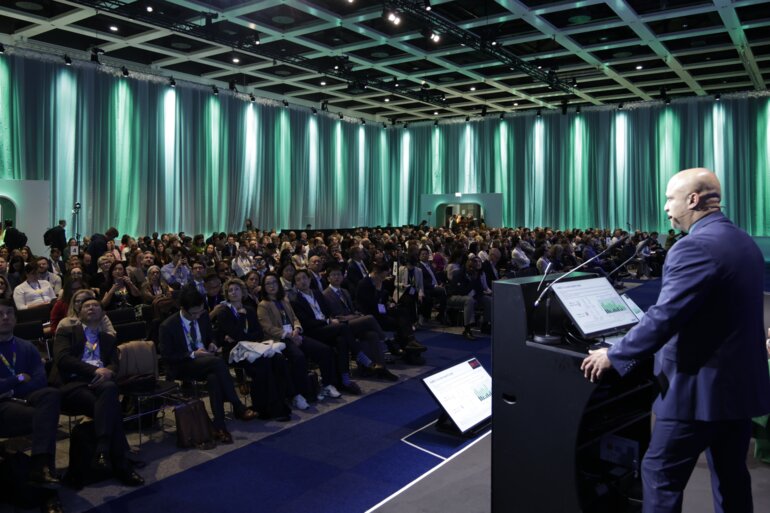At the ESMO Congress 2024, the ESMO Women for Oncology (W4O) Committee is presenting new findings on female representation in leadership positions
There is growing evidence that increasing gender diversity in workplaces goes alongside improved productivity and innovation, and, when it comes to medical workforce, also translates into better patient outcomes (Lancet. 2019 Feb 9;393(10171):560-569). In 2023, the European Society for Medical Oncology (ESMO) reached gender parity among its membership: in twenty years, its female membership has almost doubled, reaching 51% last year, and more than half of the members are represented by women under the age of 40 (Data gathered from ESMO membership database). These figures are the signs of the times, when a large proportion of the oncology workforce is represented by women, and many are entering the field. But is this growing number also reflected in more female oncology professionals in leadership positions?
Since 2015, the ESMO Women for Oncology (W4O) Committee has been conducting international authorship and monitoring studies investigating female representation in leadership positions. Although some progress has been reported over the years, the trends observed reflect a grim reality: in oncology, the glass ceiling is yet to be broken.Updated gender data from the W4O studies will be presented at the ESMO Congress 2024 (Barcelona, 13-17 September; abstract 1541MO), and Dr Helena Linardou, Chair of the ESMO W4O Committee, gives a preview here.
What do the new results from the ESMO W4O Committee Authorship and Monitoring studies add to our current knowledge on gender-related issues in oncology?
In these studies, we evaluated if and how the representation of women as first and last authors in major oncology journals, as invited speakers at conferences, and within the boards of professional societies has changed for the period 2017-2022 compared to previously published results from 2016-2019 (ESMO Open. 2021 Dec;6(6):100281). With a longitudinal data analysis approach, the ESMO W4O Committee Authorship and Monitoring studies chart whether there has been any progress towards gender equity in oncology leadership positions over years, giving some insights to assess the effectiveness of international initiatives promoting gender equity, including those supported by the ESMO W4O initiative. In 2015, our first results showed that women were significantly underrepresented compared to men, not only at conferences but also in professional societies, both at national and international level. At the ESMO Congress this year, updated data will be reported from larger datasets, covering 35 oncology congresses with 6551 speakers and 50 societies with 607 board members.
Results from our studies have shown that the situation has improved in almost a decade, but progress is still little, and not only in oncology. As the United Nation’s Progress on the Sustainable Development Goals (SDG): The Gender Snapshot 2022 showed, it may take close to 300 years to achieve full gender equality if we continue to proceed at this pace.
We need to step up our efforts, and data from our studies can provide guidance to develop novel initiatives in advocacy, education and public policy, and enable the ESMO W4O Committee as well as other groups to drive meaningful change.
Do women in oncology face unique challenges or barriers in their professional path?
Findings from the ESMO W4O 2021 survey investigating obstacles to gender equity in oncology showed that gender was the main barrier to career development for female oncology professionals, while ethnicity, sexual orientation and religion were considered to have little or no impact (ESMO Open. 2023 Apr;8(2):100781). Gender was also identified as the main aspect affecting negatively salary setting and contributing to pay gaps. Poor work-life balance, unconscious bias and lack of leadership development, mentors, and sponsors for women were reported as contributing factor to the significant underrepresentation of women in leadership positions, although they are not exclusive to women. Alarmingly the survey also found that approximately 30% of respondents reported harassment in their workplace. This has encouraged ESMO to take action by launching a survey to assess this specific issue in oncology, the results of which are eagerly awaited.
What can ESMO and oncology professionals do to overcome gender-related barriers in the oncology community?
With gender parity already achieved in its membership, ESMO is well-positioned to lead initiatives in support of gender equity and drive progress in the field We need not only to raise awareness about flexible working hours, pay gaps or salary settings, but also to tailor education, mentorship and sponsorship programmes so that they recognise gender equity.
The ESMO W4O Committee is being increasingly approached by local or regional groups as well as individual oncology professionals wishing to establish networking opportunities for women at local and national levels. This growing interest underscores the relevance of addressing gender equity within the field.
I believe that as the Society continues to implement actions towards gender equity, it is now essential to raise awareness of those recommendations which would help to ensure all members continue to receive equal support in accessing opportunities for career development and leadership. This is the direction we are currently working towards.
At an individual level, it is important that oncologists firstly realise that gender inequalities are today’s reality, and not solely an issue of the past. Anyone can contribute to rebalancing the representation of women in leadership positions, for example by advocating for equal recognition of skills and expertise among men and women, so they can access similar career opportunities and professional positions.
Since 2013, the ESMO W4O Forum, held annually during the ESMO Congress, has provided an opportunity to discuss the advancement and empowerment of women in the field of oncology, understand the challenges they face, and explore how these challenges can be overcome. What can we expect from this year’s forum?
As a forum, it offers a platform for audience interaction with the panel, fostering sharing, networking, exchanging experiences and mutual learning. Historically, the ESMO W4O Forum has also been an opportunity to meet inspirational leaders, both women and men, involved in cancer care. This year, for the first time, panellists come from various medical fields other than oncology, including surgery and emergency medicine, with the intent to find the similarities and differences that healthcare professionals face in their everyday professional life. Beyond the forum as a must-attend appointment, members of the ESMO W4O Committee will make themselves available during the congress, in a space established within the Press and Media Centre, for all those who are interested in engaging with us, informally network and work together toward making an impact on gender equity in oncology.
Programme details
Empowering women in oncology: Exploring solutions to today's challenges across oncology fields. ESMO Congress 2024
ESMO W4O Forum, 14.09.2024, h. 14:45-16:15, Cartagena Auditorium – Hall 7
H. Linardou, et al. Leadership roles in oncology: gender is still a barrier. Results from the new ESMO Women for Oncology Committee authorship and monitoring studies. ESMO Congress 2024, abstract 1541MO.
Mini Oral session - Policy and preventive strategies, 16.09.2024, h. 14:45-16:15, Zaragoza Auditorium – CC5








